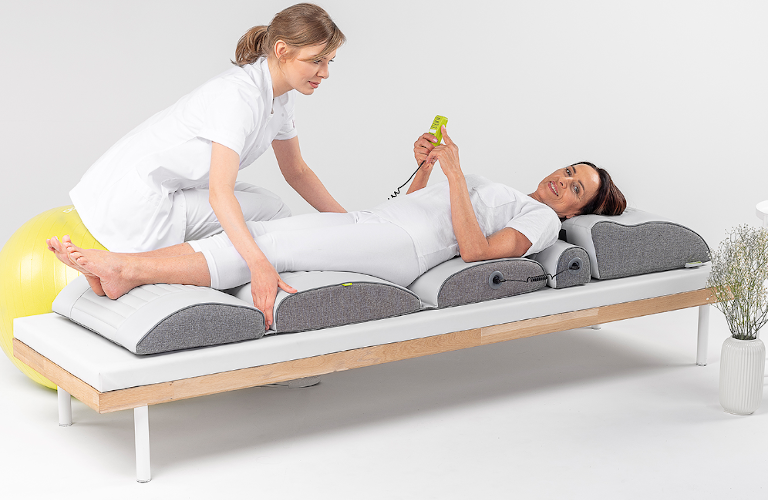Dear readers, you are about to read the second part of the article on autoimmune diseases. We invite you to read it and wish you a pleasant reading experience.
Autoimmune diseases are a broad group of conditions and so far they are considered chronic. However, thanks to medical developments, we can significantly delay the development of diseases and alleviate their symptoms. Medications are designed to calm an overactive immune system and physical activity keeps the body in good shape.
Treatment of autoimmune diseases
There is no single effective treatment for autoimmune diseases, primarily because the causes are not known. In addition, they can affect almost every system of our body, so they produce quite different symptoms. In addition, doctors are increasingly looking at the co-occurrence of various autoimmune diseases, which can also make it very difficult to diagnose and plan appropriate treatment.
Pharmacological treatment in autoimmune diseases primarily involves the administration of immunosuppressive drugs, i.e. drugs that reduce the activity of our immune system. Equally important in the treatment process is the control of inflammation – so anti-inflammatory drugs, painkillers and corticosteroids are also involved.

Not by pharmacology alone does man live
The importance of a proper diet cannot be overlooked here, as approximately 70% of all immune cells are located in the gut.
Admittedly, there is no one strictly designed diet for autoimmune diseases. Patients are usually advised to follow an elimination diet, which most often involves ingredients such as gluten, lactose or cow’s milk protein. Elimination diets have been shown to be most effective in the case of coeliac disease – a gluten-free diet can sometimes achieve complete remission of the disease. In people with coeliac disease, gluten consumption causes damage to the intestinal villi, which results in impaired absorption of nutrients and, in the long term, will cause nutrient deficiency.
It is also increasingly common to see specially designed diets for people with Hashimoto’s disease or insulin resistance (as the two often go hand in hand).
Rehabilitation
Movement is health – with this I think everyone can agree. It is no different in the case of autoimmune diseases.
Physical activity does not only affect our physical fitness, but is also of great importance for our mental condition, which is why patients suffering from various autoimmune diseases should combine physical activity with drug therapy. Of course, each patient must have individually selected exercises, so that they are not too strenuous for the organism, but at the same time intense enough for the patient to be able to maintain mobility for as long as possible.
It is not uncommon for people with autoimmune diseases to suffer from depression. And this is another strong argument for the need to implement exercise rehabilitation into patients’ daily therapy.
All tricks allowed
As we mentioned earlier, the treatment of autoimmune patients consists mainly of symptomatic treatment. Therefore, anything that helps such a person will be a good option.
For some people, a daily 30-minute walk may be beneficial. Someone else will go to a swimming pool as part of their therapy, while someone else will benefit from a massage. The important thing is to find the right therapy for you and not to give up.
A well-chosen therapy can make a significant contribution to reducing the symptoms of the disease.
Vibrotherapy helps to combat a faulty lymphatic system
It is also worth mentioning at this point the benefits of vibrotherapy treatments. And these are benefits of a very broad spectrum.
Since vibrotherapy affects all systems of our body, it can also be successfully applied to people suffering from disorders of the lymphatic system.
Vibrotherapy is recognised as one of the safest forms of physical therapy. It has virtually no side effects and can therefore be used in any patient with an autoimmune disease.
Vibrotherapy equipment made by the Polish company Vitberg is worth recommending. The device consists of a Base Device and 5 Active Modules, which have been programmed to cover the most important areas of our organism with their action. A big plus of this equipment is the lying position during treatments. It is therefore relaxation and rehabilitation in one.
Vibrotherapy can be a great alternative for people who are unable to undertake physical activity due to increased disease symptoms (e.g. muscle and joint pain) or a significantly weakened mental state.

Consequences of autoimmune diseases
Common complications of autoimmune diseases are:
– loss of bone mass and bone mineral density
– reduced joint mobility
– inflammation of muscles and joints
– increased risk of osteoporosis and fractures (mainly in females)
– cardiovascular diseases, including atherosclerosis
– depression
The topic of autoimmune diseases is extremely broad, so it is impossible to list all the complications associated with them here, but just by looking at these few, we can see how important physical activity is. This is because it helps to keep the body in the best possible condition while slowing down the progression of the disease.
* It is important to remember that during an acute flare-up, a break in physical activity should be taken.
References:
1. CD8+ T-Cell Deficiency, Epstein-Barr Virus Infection, Vitamin D Deficiency, and Steps to Autoimmunity: A Unifying Hypothesis. Michael P. Pender. Autoimmune Dis. 2012 Jan 24. doi: 10.1155/2012/189096
2.A three month controlled intervention of intermittent whole body vibration designed to improve functional ability and attenuate bone loss in patients with rheumatoid arthritis. Prioreschi A., Tikly M., McVeigh J. BMC Musculoskelet Disord. 2014 Nov 29. doi: 10.1186/1471-2474-15-403
3.Bone loss in patients with rheumatoid arthritis: results from a population-based cohort of 366 patients followed up for two years. Glenn Haugeberg , Ragnhild E Ørstavik, Till Uhlig, Jan A Falch, Johan I Halse, Tore K Kvien. Arthritis Rheum. 2002 Jul;46(7):1720-8. doi: 10.1002/art.10408.
4.Managing Osteoporosis and Joint Damage in Patients with Rheumatoid Arthritis: An Overview. Yoshiya Tanaka. J Clin Med. 2021 Mar 17;10(6):1241. doi: 10.3390/jcm10061241.
5.Występowanie chorób autoimmunologicznych u osób z cukrzycą typu 1 oraz u ich krewnych. Goworek M., Madej A., Suwała Sz., Szadkowska A. Clinical Diabetology. Vol 2, No 1 (2013).




